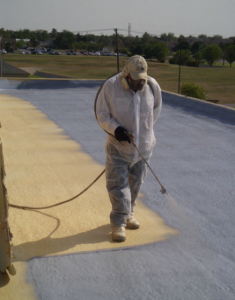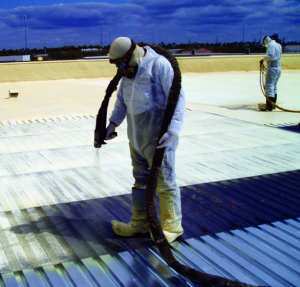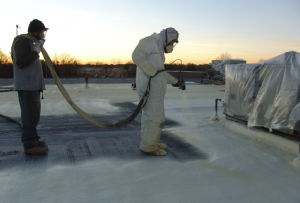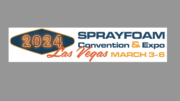
SPF has the ability to insulate, air and water seal, as well as control moisture throughout the structure, acting as a single-source solution, reducing the need for multiple products.
As one of the world’s most influential economies, the state of California has demonstrated its power in leading the other 49 states in the implementation of progressive initiatives. California traditionally takes an environmental stance with a history of enforcing regulations designed to protect the physical environment and health of the state’s residents. These efforts often result in national trending with other states and municipalities following suit with similar regulations. It is widely anticipated a similar phenomenon will occur with ZNE goals.
The design of a ZNE building focuses on the reduction of energy consumption and on the generation of the structure’s own renewable energy (such as via solar panel solutions). Long-term ZNE begins with a quality building enclosure. High-performance attics and wall systems are a key focus of 2016 Title 24 as they make a significant impact in the reduction of peak cooling demand in structures.

SPF may be installed in a continuous layer, eliminating thermal bypasses, and boasts one of the highest R-values of all insulation options.
Because of spray polyurethane foam’s unique attributes, the material is widely recognized as an optimal solution for unvented attics, as well as for roofing, walls and ceilings. SPF has the ability to insulate, air and water seal, as well as control moisture throughout the structure, acting as a single-source solution, reducing the need for multiple products.
Energy loss may occur at various points throughout the roof, walls and ceiling via air leakage. Thus the air-sealing ability of SPF is extremely beneficial when trying to improve energy efficiency.
As a thermal insulator, SPF forms in place and fully adheres, almost completely eliminating the cracks and gaps that allow escape of conditioned air. It may be installed in a continuous layer, eliminating thermal bypasses typically found with cavity insulations and boasts one of the highest R-values of all insulation options.In roofing, SPF acts as a protective roofing solution and as an insulator. The effectiveness of insulation is measured through moisture control, air leakage, health, safety, durability, comfort and energy efficiency factors, and SPF scores exceptional marks in all.
These combined characteristics are integral to SPF’s ability to contribute to total ZNE solutions—solutions, which will become increasingly necessary as the net zero revolution takes hold across the U.S.





SPFA offers a wide range of technical information about SPF roofing systems. Visit http://www.sprayfoam.org. We offer many resource documents downloadable from our website.
SPF is applied as a liquid, which rapidly expands and cures into a foam. Because it is formed on the jobsite, it tenaciously adheres to nearly any dry and reasonably clean substrate and ‘self-flashes’ around a wide range of penetrations. While the water-resistance closed-cell foam serves as both insulation and primary water barrier, all SPF roofing applications require a top coating to protect the foam from damaging UV light and minor abrasion.
In terms of performance history, there are existing SPF roofs over 50 years old, sprayed when SPF roof systems were first introduced into the market. In 2013 between 50-100 million square feet of SPF roofing was installed in the US. With proper maintenance (regular inspection and periodic re-coating) a SPF roof system can last as long as the building itself.
SPF roof systems will work in any climate zone or environment. Product testing and field studies show that SPF provides exceptional resistance to wind uplift and severe weather events. Regions with high solar exposures and outdoor temperatures tend to need more frequent re-coating than colder climates, which is true for any roofing system. A variety of coating systems are available for SPF roofing that can be optimized for durability, cost and solar reflectance.
I’m interested in this application. Somehow i can’t get out of my mind that a flat roof requires a roof membrane. According to this article Spray Polyurethane Foam will act as both an insulator and a membrane. What kind of track record does this product have for this type of system, Are there any weather enviroments where this might not be used exposed?
Steve